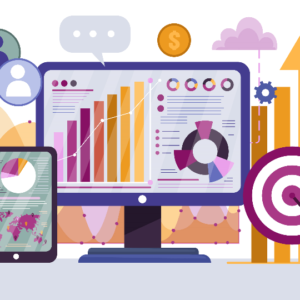Have you ever been in a conversation, right in the middle of a sentence, when the person you’re talking to looks at their phone, scrolling to see their latest notifications and messages? And what about those smartwatch users who think they’re being discreet, just looking at the time, but their lingering glance lets you know they’re reading an email. And what about you, when you’re watching a match, or your kids playing, how many times do you pull out your phone and see what else is happening?
Human behaviour is changing. We’ve so much choice, so much content, we receive so many messages – constantly – and we’re “always on”.
What are you doing to adapt to changing customer behaviour?
Why Customer Behaviour is Changing
Thanks to the “fab four” or the FANGAM stocks, Facebook, Netflix, Google, and Amazon, customers now want personalisation and immediacy. We live in an attention economy where The New York Times tells us “Attention is a resource; a person has only so much of it.” And thanks to the global pandemic, we’re now doing more digitally than we ever have done before, with Alexia Quadrani of J. P. Morgan reporting that ‘A permanent shift has taken place across the industry from a linear platform to a digital platform.”
What key changes are we seeing in Customer Behaviour?
This shift in customer behaviour has led to increased expectations of what they want from their service providers, their retailers, and indeed their favourite sport. They want access to news, statistics, footage, and images, but they want it when the time is right for them. They want it delivered on the platform they’re using at that time. And they want it to be based on what you already know about them. Because they’ve been a fan of yours for years, or they’ve played your sport since they were at school, or they’ve attended six events in the last twelve months, follow you on Facebook, like your videos on YouTube, and bought a t-shirt from your online store.
The customer has always been right – but now they’re not only right, but they’re also in control. Because if you don’t give them what they want, on the platform they’re using, and at the time they expect it, they’ll not just vote with their feet, they’ll vote with their thumbs and their keyboards. They’ll stop visiting your website, following and sharing your content, they’ll find other streams when they want a video fix. And, when it comes to finding something to do on a Saturday afternoon, they might choose a Prime special, League of Legends battle, or a cycling challenge. It won’t be because you’ve lost their fandom, or they’ve fallen out of love with your sport, it’ll be because Amazon, Xbox, and Peloton have made it easy for them to say yes.


The Role of Data in Communicating with our Customers
We used to say that data is the new oil but according to David McCandless that’s no longer the case, data is now the new soil. And by the way, one day it will be a corporate asset – we tabled the question “How much is your customer data worth?” back in 2017 and while we haven’t yet been able to answer it, we’re getting close. We see this as a priority for the sports industry – as Douglas Laney, originator of the term infonomics to mean the capture of real, demonstrable, and asset values of data, said in 2020 “Your company’s data may be worth more than your company”.


But what role does it play in our communications?
1) We use data points to allow us to personally address our customers: that could be the use of their first name in our email subject lines to increase open rates.
2) We might use their address data to ensure relevance: if we have a last-minute ticket offer we won’t send it to our fans that live abroad.
3) We can use data about their interests to maintain their engagement: if we know they have a favourite player, we highlight that player’s recent form to grab their attention.
4) We look at what they’ve purchased before to make sure we’re not asking them to buy the same thing again!
These are pretty basic examples but they make a point – your ability to communicate using data is limited only by the data points you have access to and the platform you’re using to get your message out. Even if you’re just getting started with email marketing there’s so much you can do using conditions and tags to create segments. And, if you’ve progressed into more of a cross-channel environment, then you can take the same approach in your mobile app and website push-messages, your SMS marketing, and paid advertising…. using conditions and tags to create segments!
Summary
With people using more digital platforms, consuming more digital content, and interacting more through digital, we’re generating more data, and it’s this data that provides the cornerstone of our data-driven communications. It allows us to engage with our customers at a very deep and personal level, giving us the ability to tell them what they want to hear at a time when they need to hear it. And on their platform of choice. This in turn increases the chances that these people – our customers, fans, or other stakeholders – will then do what we want them to, whether it’s to spend, watch, participate or engage.
Your customers are expecting more from you, so you need to be in a position to deliver this – you need to be adapting to the changes in your customer behaviour.
Contact us if you’re unsure how to get started or to make progress in understanding your changing customer behaviour or how you use data to communicate with your customers.





